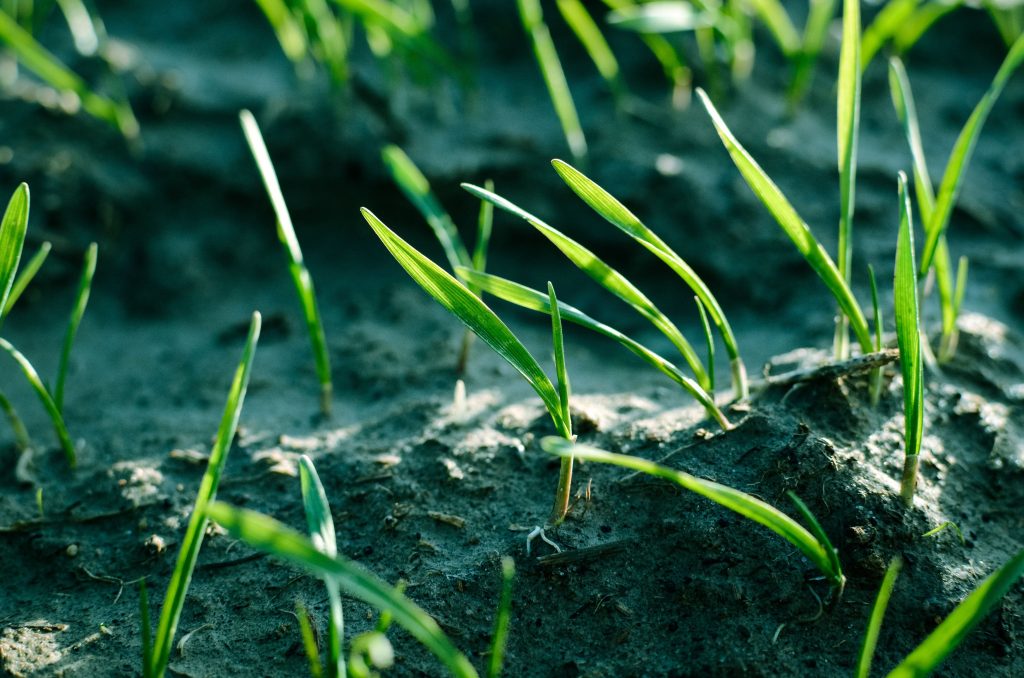If you’ve ever thought about seeding your cool-season lawn, you’ve likely asked yourself, when is the best time to plant grass seed? A quick search online will tell you planting grass seed in fall is best for northern lawns, followed by spring grass seeding.

Why is it important to think about when to plant grass seed? Why is fall seeding the best?
First, it’s helpful to understand cool-season grasses—Kentucky bluegrass, perennial ryegrass, and tall fescue—and how they grow.
Cool-season grasses grow the best in spring and fall when air and soil temperatures are between 65 and 75°F. Growth slows in the summer when it’s hot, and they go dormant in the winter, i.e., stop growing entirely to survive freezing temperatures.
Therefore, the best time to plant grass seed is in the fall (about 45 days before the first expected frost), just as the grass is going into its most active growth.
Autumn has a fantastic mix of cool air and warm soil, perfect for germination. The new sprouts can then grow quickly, developing a robust root system before going dormant in late fall.
Why shouldn’t you plant grass seed in spring?
Ultimately, fall is recommended over spring because grasses in the Northeast, Midwest, and Pacific Northwest are better prepared to handle cold weather over hot summers. A newly germinated lawn is more equipped to enter winter dormancy than face heat and drought stress in July or August.
What happens if you plant grass seed too early?
If you seed in late summer or early fall, seedling growth will be slow or halted completely because the temperature is too high. The new grass may also become stressed from too little water, making it more vulnerable to insects and diseases.
What happens if you plant grass seed too late?
If you seed too late in the season, you’ll shorten this “good” growth period. The roots won’t have enough time to grow into the soil, and the grass blades won’t have time to establish and prepare for the upcoming winter. The new grass will be at greater risk of winterkill, and fewer plants will survive to spring.
Need help with repairing your lawn? Contact us here to get a quote. You can also connect with us on Facebook.

